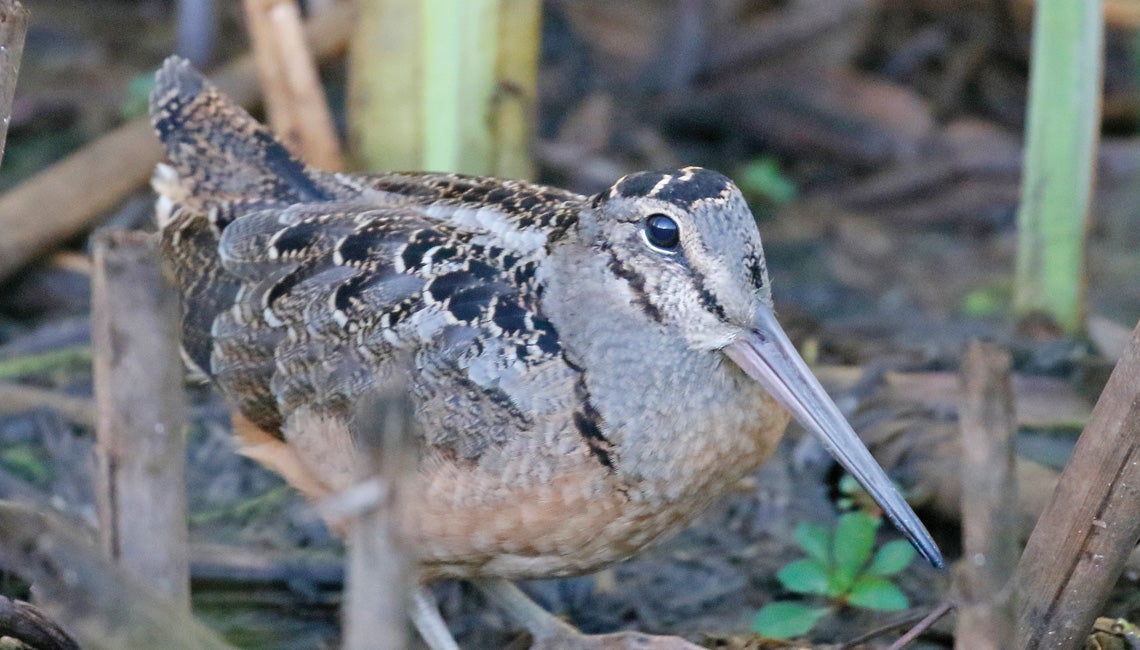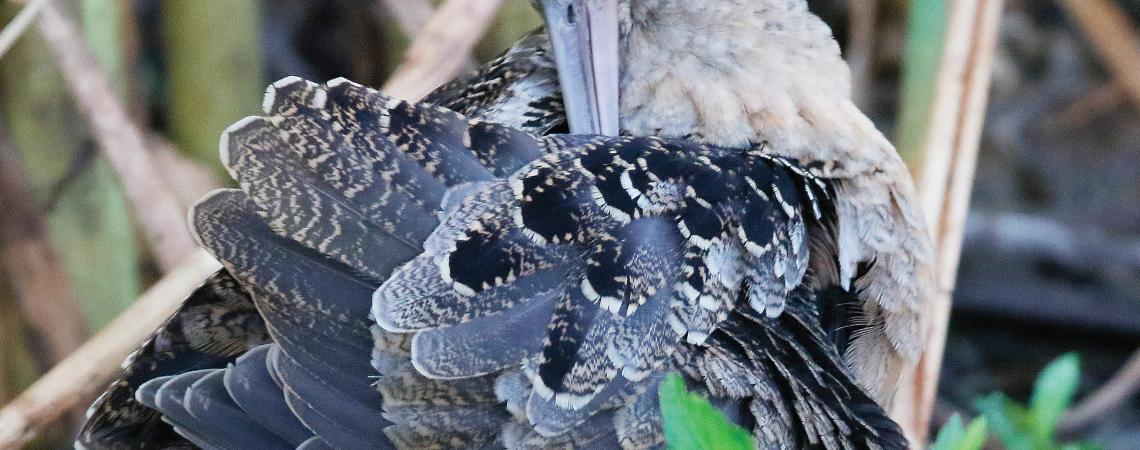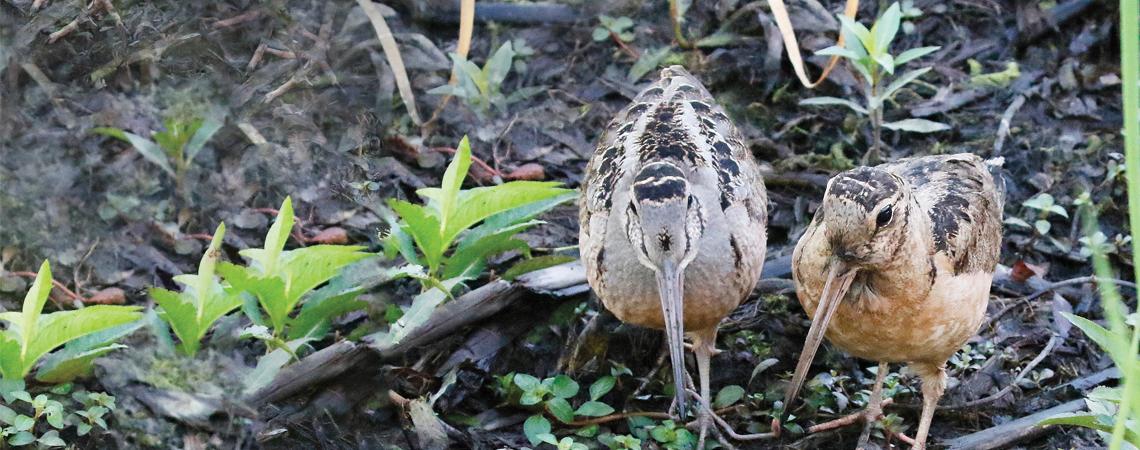Head outdoors with me after supper some evening during the month of April, and remember to take a jacket, as it will be chilly by the time we return after dark. What we’ll be seeking is an open meadow, grassy clearing, or abandoned field with low groundcover near a moist, brushy thicket. What we’ll be hoping to see — and hear — is one of the most spectacular courtship displays around, from one of Ohio’s oddest birds: the woodcock.
Similar in appearance, both male and female look as if they were designed by a committee. About the size of a robin (only with a shorter tail), woodcock have a long, slender bill, very short legs, a large head connected to a chunky body by a short neck, and large, dark eyes placed well back on the sides of their head. The birds are mostly nocturnal, and, being colored a mixture of browns and grays, are well camouflaged. Normally very secretive, woodcock are usually only seen for a few short seconds when flushed.
But during early spring when the birds have mating on their minds, they toss caution to the wind.
In April, Ohioans can see - and hear - one of the most spectacular courtship displays around, from one of Ohio's oddest birds: the woodcock.
You’ll likely hear a woodcock long before spotting one, the sound beginning just after sunset. The woodcock’s call has been described as a single loud “peent” or “buzz,” spaced every few seconds. That usually continues for several minutes before the male finally takes wing in a spiral flight skyward, making a twittering sound as he climbs.
Higher and higher he’ll rise, erupting in a bubbling song near the apex of his spiral. He may even go completely out of sight before zigzagging back to earth in a zooming, kamikaze dive accompanied by more twittering. Landing near where he took off, he struts about much like a miniature wild turkey gobbler, then mates with any female woodcock (woodhen) that has been properly impressed.
This show may go on repeatedly for several hours — sometimes all night as the male makes dozens of courtship flights before calling it quits. Then he’s back at it well before dawn the next morning — ending his performance just before sunrise as daylight increases. Display flights can continue through May, sometimes even into June. One macho woodcock was once reported still displaying near Cincinnati in mid-July.
The U.S. Fish and Wildlife Service considers the woodcock a migratory game bird, and says there are two major woodcock populations in North America, each population inhabiting a separate region. The Eastern Region stretches from the Appalachian Mountains east to the coast; the Central Region from west of the Appalachians to the Great Plains. According to Mark Wiley, a wildlife biologist with the Ohio Division of Wildlife, ODNR staff members run 30 to 40 woodcock singing-ground survey routes each spring in the Buckeye State to tally the number of birds.
“Range-wide, the woodcock population is fairly stable in the short term,” says Wiley, “but there has been a gradual long-term decline.”
The Washington, D.C.-based Wildlife Management Institute says American woodcock populations have steadily decreased over the last quarter-century at a rate of around 1% to 2% per year. Wildlife researchers attribute the decline to the loss of young forest and shrubland areas in the eastern and central United States due to human development and changing forestry management practices.
Woodcock return to Ohio during late February and early March each year; April is the best month for viewing courtship-flight displays. Many park districts throughout the state offer woodcock watches during April, so if you are unsure what you’re looking for, tagging along on one of these free, fun programs will help get you started.
The yearly spring spectacle of woodcock flights has always been somehow haunting to me, possibly because they happen under cover of darkness, or nearly so — a dusk-and-dawn activity wildlife biologists refer to as “crepuscular.” Once it grows too dark to see the birds silhouetted against the western evening sky, I’ll reluctantly head home. And as I walk, still hearing the faint peenting/buzzing and twittering in the darkness behind me, I’m reminded of how little we know and understand of the natural world. But that’s part of the mystery and magic that continually draw us outdoors. Don’t miss the show.











